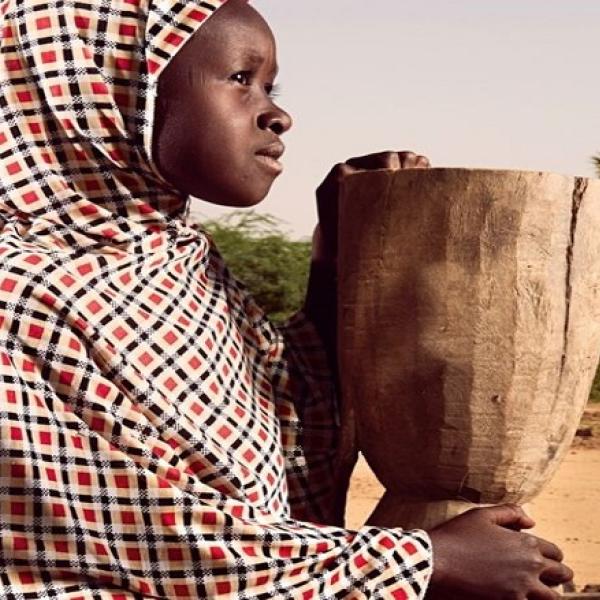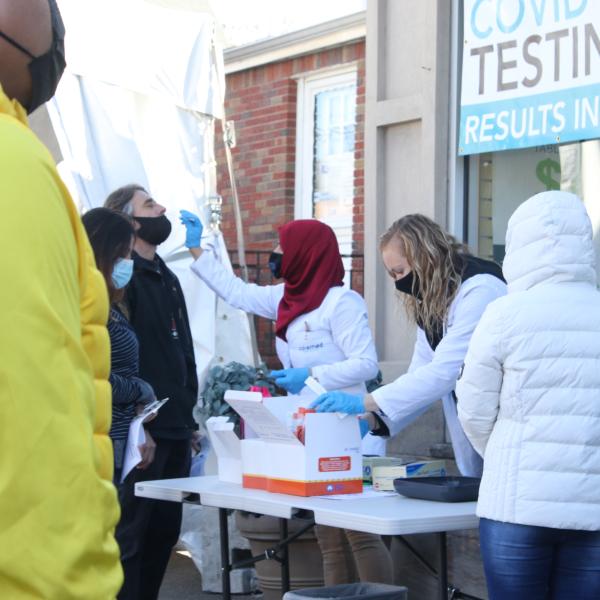Social Protection
Confronting the greatest challenges of our time demands robust social protection systems. Social protection systems allow households to prepare for, cope with and adapt to overlapping crises.
Understanding Social Protection
The need for social protection has never been greater
Social protection is a key policy instrument to manage social and economic risks and drive progress beyond programs.
Social protection sustains vulnerable people during times of crisis and also allows all people to achieve basic human dignity. This dual purpose makes social protection a valuable tool in USAID’s mission to promote inclusive and sustainable development.
Comprehensive social protection systems can break intergenerational cycles of poverty and strengthen human and social capital. This can lead to more inclusive economic growth and greater self-reliance.
Foundational resources
Socialprotection.org is a knowledge-sharing platform that contains publications, databases, news, events, blogs and weekly webinars.
Ugogentilini.net is a weekly newsletter that shares selections of social protection resources, from podcasts to academic articles.
Social Protection Drives Transformational Changes
Robust social protection systems save lives and livelihoods
Robust social protection systems that are agile, adaptive and shock-responsive can save lives and avert social and economic losses in future crises (whether climatic, pandemic-related or economic).
In 2018, the World Bank estimated that 36% of the very poor escape absolute poverty as a result of social safety nets and close to half of the poverty gap (45%) is eliminated through them. There is strong evidence that conditional cash transfers, which require the receiver to comply with specific conditions to be eligible for the transfer, can lead to a rise in overall household consumption and investment in productive assets, an increase in school attendance and a reduction in child labor.
A review of 38 studies in 17 African countries found evidence that social safety net programs:
- Decrease intimate partner violence.
- Increase women’s psychological well-being.
- May increase women’s dietary diversity and economic standing.
Social safety nets are key to helping families escape poverty. Learn how current programs protect vulnerable households and build shared prosperity.
Discover how COVID-19 impacted social protection efforts around the world and how programming must adapt to newly identified stressors.
Social Protection in Practice
Large, established risk management tools, such as national social protection systems, can help people in times of shock. Here are a few country examples:
Read more about social protection in Malawi on Socialprotection.org.
All People Deserve Protection and Opportunity
Adaptive Social Protection
Adaptive social protection is an integrated, multisectoral approach to foster inclusive growth and reduce negative impacts of challenges like poverty, food insecurity and climate change. These challenges can be compounded by covariate shocks, such as natural disasters, conflict and fragility, forced displacement, price hikes and even predictable lean seasons.
Adaptive social protection involves creating a package of services tailored to reach ultra poor and marginalized groups who are more vulnerable to shocks and stresses. This package of services typically combines social assistance measures, such as cash transfers, with other complementary measures, such as:
- Financial inclusion measures, such as village savings and loan associations (VSLA), rotating savings and credit associations (ROSCAs) and access to financial services.
- Market inclusion measures, such as strengthening input supply chains to reach the ultra poor and removing barriers to entry for the ultra poor; money for seed capital or one-time asset transfers; and internships, apprenticeships and job placement.
- Social inclusion coaching, mentoring and counseling to strengthen agency, self-efficacy and social resilience.
- Disaster risk management.
Read about the Sahel Adaptive Social Protection Program from the World Bank.
Explore the impact of economic inclusion programs in lifting vulnerable households out of poverty and discover the role of partnerships in creating sustainable change.
Social Protection and Disaster Risk Financing
USAID views social protection as a key component of a comprehensive risk management and risk financing strategy. Individuals, households, communities, governments and systems should be able to identify their risk exposure and plan and prepare for how to manage those risks, thus lessening negative impacts and improving resilient outcomes.
A comprehensive risk financing strategy will include risk layering as a critical approach. Risk layering involves having multiple financial instruments ready to be deployed in response to different kinds of risks with varying frequencies and severities. For example, using prearranged financing to rapidly disburse cash through existing social protection programs can minimize suffering and loss for vulnerable households. Disaster risk financing has transformative potential to improve the timeliness and effectiveness of a country’s response to large covariate shocks.
More resources
More About Social Protection
RES-360° Tool Kit | Resilience in Education Systems: Rapid Assessment Manual
21 Dec 2023 - Education Resilience Approaches (ERA) Program
This toolkit is a complement to the RES-360° Manual containing practical resources for data collection, analysis and implementation.
Education and Humanitarian-Development Coherence
21 Dec 2023 - USAID
In line with the humanitarian-development coherence priority, this white paper provides a conceptual framework for the education sector to support resilience efforts.
Layering Cash into Market Systems Programs: Catalyzing Market-Driven Recovery in Nigeria
03 Nov 2023 - Mercy Corps , Sasha Muench
In the midst of crisis, the Nigeria Rural Resilience Activity used unconditional cash transfers to help households cope and jumpstart local economies.
Resilience Evidence Forum 2023 Synthesis Report
19 Sep 2023 - USAID , Global Resilience Partnership
Explore key discussions held at the June 2023 Resilience Evidence Forum in this comprehensive guide to resilience-building methodologies and evidence.







